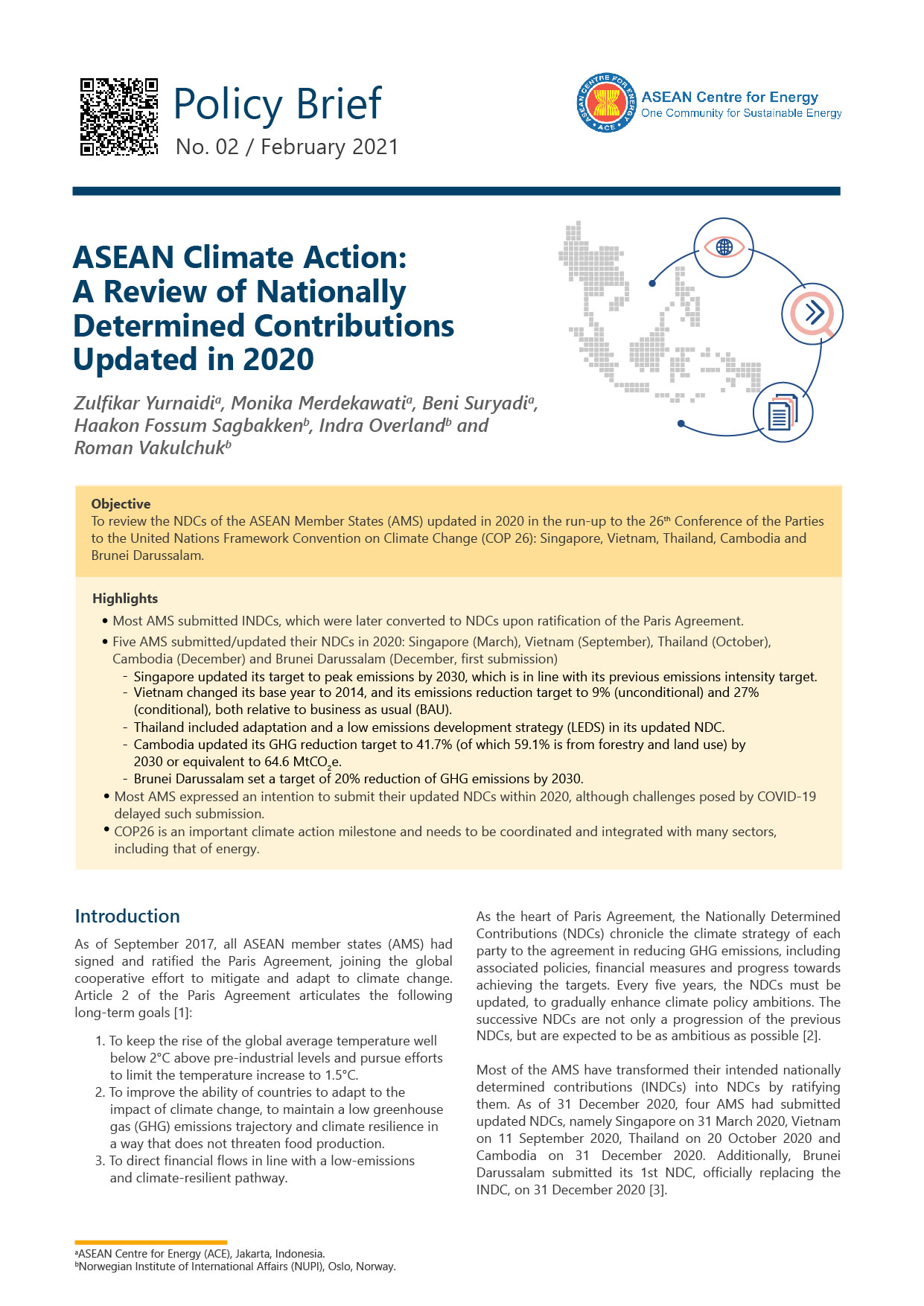Key Points
Most AMS expressed an intention to submit their updated NDCs within 2020, although challenges posed by COVID-19 delayed such submission. COP26 is an important climate action milestone and needs to be coordinated and integrated with many sectors, including that of energy. Most AMS submitted INDCs, which were later converted to NDCs upon ratification of the Paris Agreement.
- Five AMS submitted/updated their NDCs in 2020: Singapore (March), Vietnam (September), Thailand (October), Cambodia (December) and Brunei Darussalam (December, first submission).
- Singapore updated its target to peak emissions by 2030, which is in line with its previous emissions intensity target. The main update is in the type of emission target. The first NDC states a target of 36% reduction in emissions intensity from 2005 levels by 2030.
- Vietnam changed its base year to 2014, and its emissions reduction target to 9% (unconditional) and 27% (conditional), both relative to business as usual (BAU). The ambitiousness of Vietnam’s improved targets must also be seen in the light of the base year of reference for the emissions reduction target. The new base year is 2014, instead of 2010.
- Thailand included adaptation and a low emissions development strategy (LEDS) in its updated NDC. The updated NDC reiterates the same GHG reduction pledge that was introduced in the first NDC. It also restates the integration of the NDC into national strategies such as the Alternative Energy Development Plan (AEDP), the Power Development Plan (PDP) and the Energy Efficiency Plan (EEP).
- Cambodia updated its GHG reduction target to 41.7% (of which 59.1% is from forestry and land use) by 2030 or equivalent to 64.6 MtCO2e. The updated NDC is much more detailed (growing from 16 to 158 pages) and revises the BAU scenario as it enlarges the sectoral coverage.
- Brunei Darussalam set a target of a 20% reduction of GHG emissions by 2030. The NDC sets forth a clearer GHG target, with wider coverage, both in terms of GHG (adding CH₄ and N₂O) and in terms of the sector (adding industrial and waste sector).
